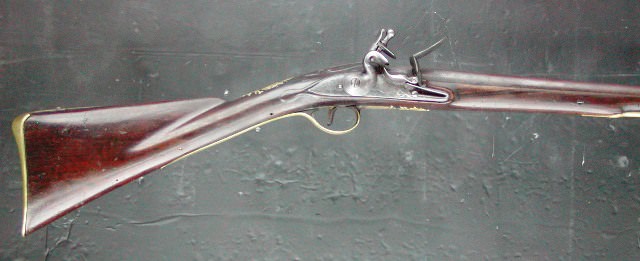Onojutta
45 Cal.
After planning on it for a long time, I was just about ready to order a Pennsylvania Fowler kit from Chambers for this winter until I decided that I wanted a fowler that had a little less in common with my last build which was a Lancaster rifle. That left me with the English Fowler/Officer's Fusil and the New England Fowler/Militia Musket kits as runners up. For the past few weeks I've been torn between the two and could use some insight. Winter is coming quickly and if I don't make up my mind soon I am liable to spend it remodeling another bathroom. 
I am not a re-enactor and don't have any strict PC requirements; however, I live and hunt in southeast and central PA and I like the idea of a fowler with lineage to what might have been used in these parts during the middle of the 18th century when this was the frontier. I also have ancestors who came over from Germany and England and although I don't know many details about when or where, the idea of a gun that would be similar to what one of my ancestors might have carried on the frontier is alluring. I know that British style fowlers were made in and around Philadelphia, but would a NE style fowler have been common in this neck of the woods during the middle of the 18th century?
Some other practical considerations include 20 gauge for the Fusil vs 10 or 12 for the NE (11 gauge is not currently available). Having two flintlock rifles, I don't plan to shoot much round ball with the fowler, so there is the "which bore is better as a dedicated shotgun" debate. I do plan to hunt small game and upland birds including turkey.
As for length, the Fusil is 57" and the NE is 62" overall. My Lancaster rifle measures just about 60" which can be a bit awkward transporting in vehicles or fitting in my ground blind, so I like that 57" seems more portable. Then again if we're talking fowlers, most of the originals were much longer than even the NE. And admittedly, how well a flintlock muzzleloader fits in a Toyota should be pretty far down the list of important considerations. But at 57", does the English Fowler/Officer's Fusil really pass for a true representation of a common fowler as the first part of its namesake might imply, or is it more of an aristocrat's gun that would have been relatively rare in those days?
Howbout balance and handling? Unfortunately, I haven't had the opportunity to try either one on. Both are similar in weight; the 10 gauge barrel weighs about 3/4 lb less than the 12 according to Chambers. I would probably go with the 10 to save that weight so either finished gun would come in around 7-3/4 lbs. Does one handle or balance particularly different than the other? Howbout for swinging at birds on the wing?
Anyway, these are just some of my thoughts. I'd appreciate hearing from anyone who owns or who is familiar with either of these guns and what your thoughts are. Why did you choose yours and how do you like it?
I am not a re-enactor and don't have any strict PC requirements; however, I live and hunt in southeast and central PA and I like the idea of a fowler with lineage to what might have been used in these parts during the middle of the 18th century when this was the frontier. I also have ancestors who came over from Germany and England and although I don't know many details about when or where, the idea of a gun that would be similar to what one of my ancestors might have carried on the frontier is alluring. I know that British style fowlers were made in and around Philadelphia, but would a NE style fowler have been common in this neck of the woods during the middle of the 18th century?
Some other practical considerations include 20 gauge for the Fusil vs 10 or 12 for the NE (11 gauge is not currently available). Having two flintlock rifles, I don't plan to shoot much round ball with the fowler, so there is the "which bore is better as a dedicated shotgun" debate. I do plan to hunt small game and upland birds including turkey.
As for length, the Fusil is 57" and the NE is 62" overall. My Lancaster rifle measures just about 60" which can be a bit awkward transporting in vehicles or fitting in my ground blind, so I like that 57" seems more portable. Then again if we're talking fowlers, most of the originals were much longer than even the NE. And admittedly, how well a flintlock muzzleloader fits in a Toyota should be pretty far down the list of important considerations. But at 57", does the English Fowler/Officer's Fusil really pass for a true representation of a common fowler as the first part of its namesake might imply, or is it more of an aristocrat's gun that would have been relatively rare in those days?
Howbout balance and handling? Unfortunately, I haven't had the opportunity to try either one on. Both are similar in weight; the 10 gauge barrel weighs about 3/4 lb less than the 12 according to Chambers. I would probably go with the 10 to save that weight so either finished gun would come in around 7-3/4 lbs. Does one handle or balance particularly different than the other? Howbout for swinging at birds on the wing?
Anyway, these are just some of my thoughts. I'd appreciate hearing from anyone who owns or who is familiar with either of these guns and what your thoughts are. Why did you choose yours and how do you like it?
Last edited:








